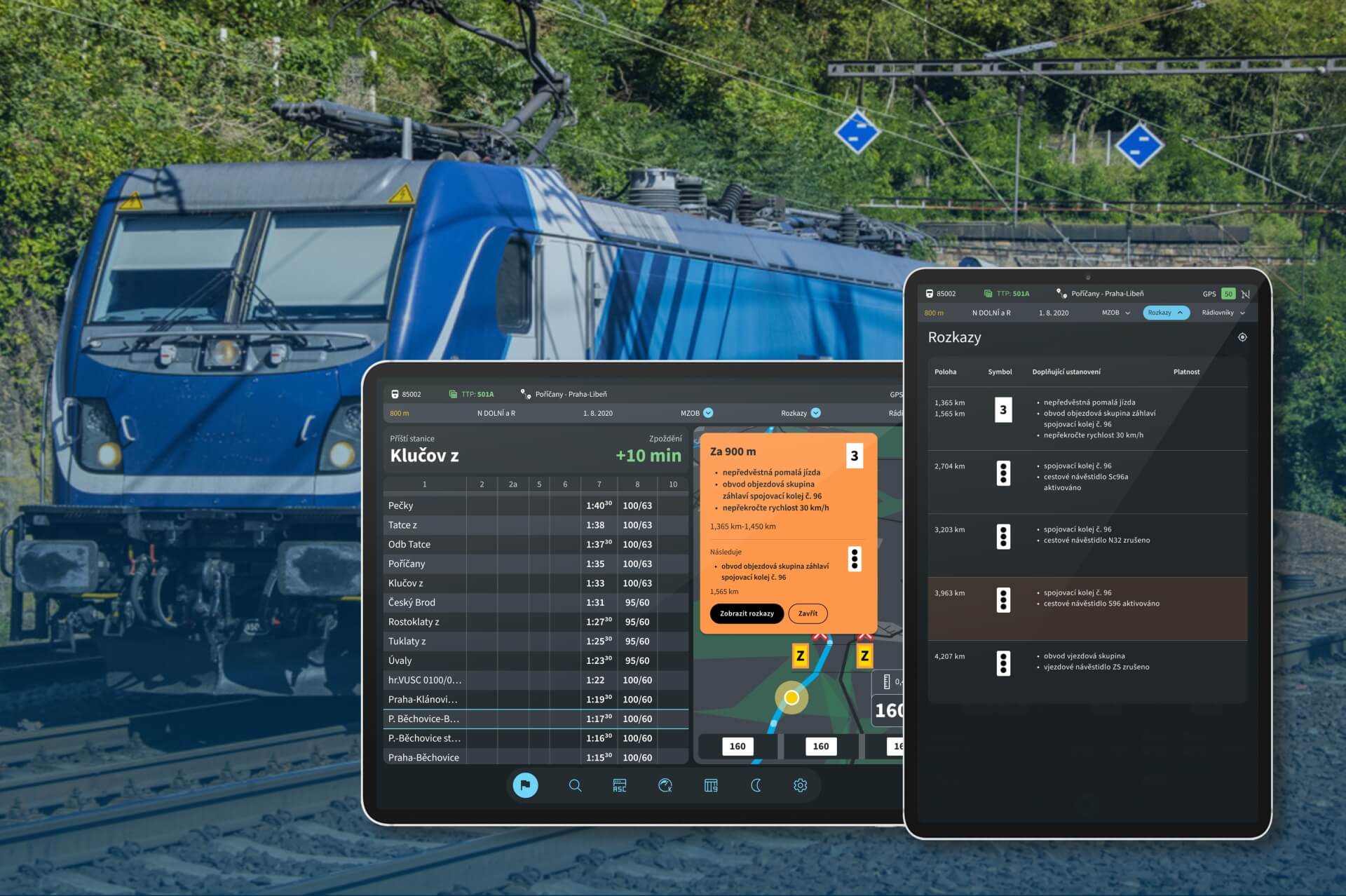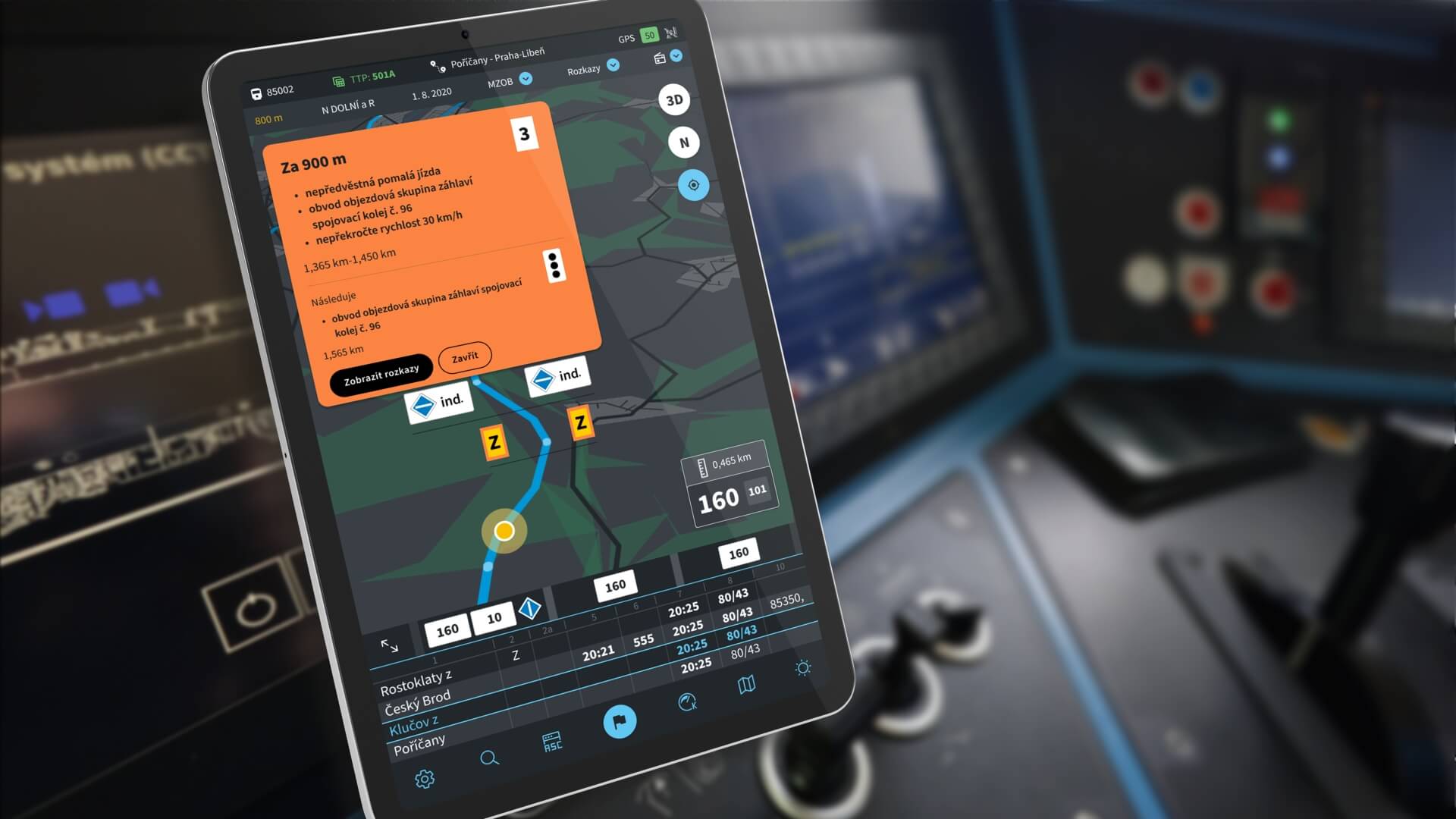Betrian announces that the NavTrain driver navigation system will be fully prepared for the launch of Digital orders (also known as List of valid restrictions) from Správa železnic (SŽ). The launch is planned for the end of 2025 and will bring a major change: the responsibility for delivering information about planned restrictions to the driver (e.g. speed restrictions, track closures, or other limitations) will shift from SŽ to the railway operators.

NavTrain will include everything necessary to ensure that the driver has all required information readily available. This will be made possible thanks to close cooperation with SŽ, which will provide data interfaces for this purpose. The integration of these new functionalities is currently underway, and we expect to have a test version available at the beginning of September.
The Digital orders feature will add further track condition information to NavTrain, supplementing the existing data from the Line condition tables. Drivers will then be able to view everything in a user-friendly application. “There will be no need to search for orders in emails or archive paper copies, nor to look anything up manually. NavTrain will display the full detail of a digital order directly within the current train route in real time,” says Martin Smejkal, NavTrain Project Manager at Betrian.
All necessary information about the current and upcoming functionalities of NavTrain can be found here.
“The integration of Digital orders is another step toward a paperless and safer railway. Our goal is to ensure that drivers have all the information they need for their work in a paperless, unambiguous, and easily accessible way. And this applies not only to NavTrain but also to our other driver-oriented systems such as EVP, NavSIM nebo DPS,“ adds Petr Sec, co-owner of Betrian.
Betrian Group
Since 2018, the Betrian Group has been focusing on the rail sector in addition to hardware and software development and process digitalization. It is developing the NavSuite ecosystem, which is designed to optimise the planning, monitoring and management of rail traffic. It simplifies complex logistics processes, from planning commodity shipments to managing locomotive maintenance, planning driver shifts and providing real-time navigation support.
